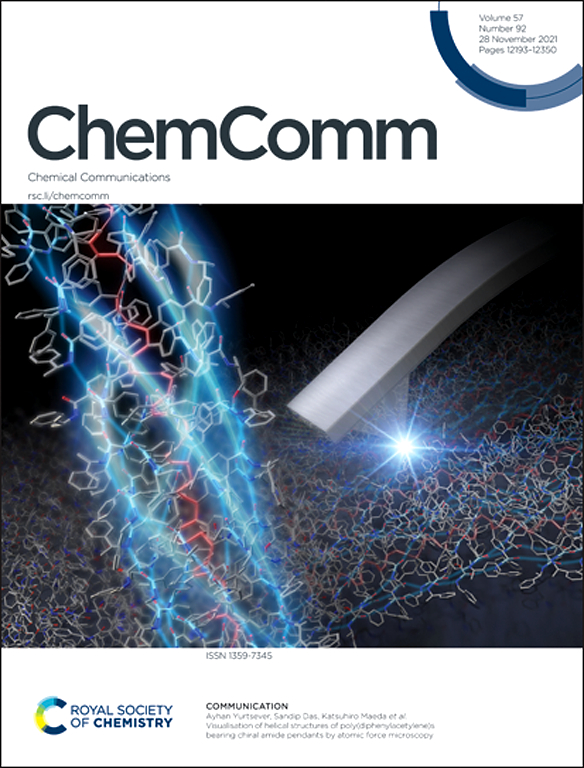Supramolecular artificial light-harvesting systems incorporating aggregation-induced emissive components: from fabrication to efficient energy conversion
IF 4.3
2区 化学
Q2 CHEMISTRY, MULTIDISCIPLINARY
引用次数: 0
Abstract
The harvesting and utilization of light energy has increasingly captivated researchers. The construction of artificial light harvesting systems (ALHSs) through supramolecular assemblies has emerged as a prominent approach. Following the discovery of the aggregation-induced emission (AIE) phenomenon, AIE luminogens (AIEgens) have been extensively employed to develop ALHSs, in which these molecules are assembled into nanoparticles or nanoaggregates to enhance energy transfer efficiency. In this review, we summarize recent research advances in supramolecular ALHSs based on AIEgens, including some representative examples reported by our research group and others. In particular, different design strategies for ALHSs formed by self-assembly of host-guest complexes and other building blocks such as macrocyclic and amphiphilic molecules, are discussed over the past three years. For host-guest complexes with AIE activity, we analyze the design principles of AIE-active hosts or guests, and how their self-assembly influences the efficiency of ALHSs. For AIE-active macrocycles or amphiphiles that do not form host-guest complexes, we discuss how they can independently self-assemble into ALHSs. Finally, future research directions for the utilization of AIEgens in the development of ALHSs are discussed.包含聚集诱导发射组件的超分子人工光收集系统:从制造到有效的能量转换
光能的收集和利用越来越吸引着研究人员。通过超分子组装构建人工光收集系统(alhs)已成为一种突出的方法。随着聚集诱导发射(AIE)现象的发现,AIE发光原(AIEgens)已被广泛用于开发alhs,其中这些分子被组装成纳米颗粒或纳米聚集体以提高能量传递效率。本文综述了近年来基于AIEgens的超分子alhs的研究进展,包括本课课组和其他研究人员报道的一些具有代表性的例子。特别是,在过去的三年里,对由主-客体复合物和其他构建块(如大环分子和两亲分子)自组装形成的alhs的不同设计策略进行了讨论。对于具有AIE活性的主-客体复合物,我们分析了AIE活性的主/客体的设计原则,以及它们的自组装如何影响alhs的效率。对于aie活性大环或不形成主客体复合物的两亲体,我们讨论了它们如何独立地自组装成alhs。最后,对aigens在alhs开发中的应用前景进行了展望。
本文章由计算机程序翻译,如有差异,请以英文原文为准。
求助全文
约1分钟内获得全文
求助全文
来源期刊

Chemical Communications
化学-化学综合
CiteScore
8.60
自引率
4.10%
发文量
2705
审稿时长
1.4 months
期刊介绍:
ChemComm (Chemical Communications) is renowned as the fastest publisher of articles providing information on new avenues of research, drawn from all the world''s major areas of chemical research.
 求助内容:
求助内容: 应助结果提醒方式:
应助结果提醒方式:


